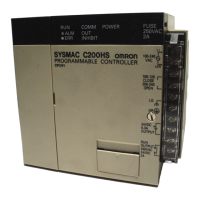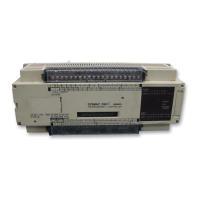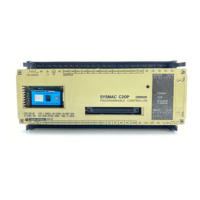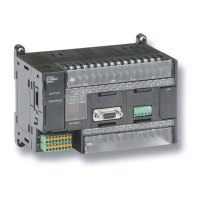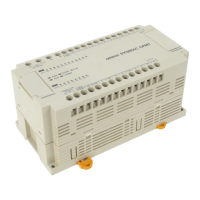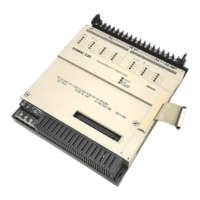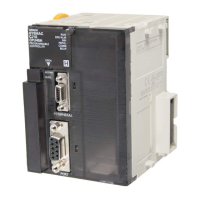7-2SectionWiring
57
If
there is a possibility of leakage current causing a transistor or triac to malfunc
-
tion, connect a bleeder resistor across the output as shown below.
PC
Load
power supply
OUT
COM
Bleeder resistor
L
R
Determine the value and rating for the bleeder resistor using the following for-
mula.
E
on
I
–––
R
Where
E
on
= ON voltage of the load
I = leakage current in mA
R = bleeder resistance
When
connecting a transistor or triac Output Unit to an output device having
a
high
surge current (such as an incandescent lamp), care
must be taken to avoid
damage
to the Output Unit. The transistor and triac Output Units are capable of
withstanding
a surge current of ten times the rated current. If the surge current
for
a particular device exceeds this amount, use the circuit shown below to pro
-
tect the Output Unit.
R
L
+
OUT
COM
Another way of protecting the Output Unit lets the load draw a small current
(about
one third the rated current) while the output is OFF
, significantly reducing
the
surge current. This circuit (shown below) not
only reduces the surge current,
but also reduces the voltage across the load at the same time.
R
L
+
OUT
COM
When
connecting TTL circuits to transistor Output Units, it is necessary to
con
-
nect
a pull-up resistor and a CMOS IC between the two. This is because of the
residual voltage left on the transistor output after the output turns OFF.
Output Leakage Current
Output Surge Current
Transistor Output
Residual Voltage
Downloaded from Elcodis.com electronic components distributor
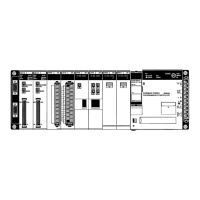
